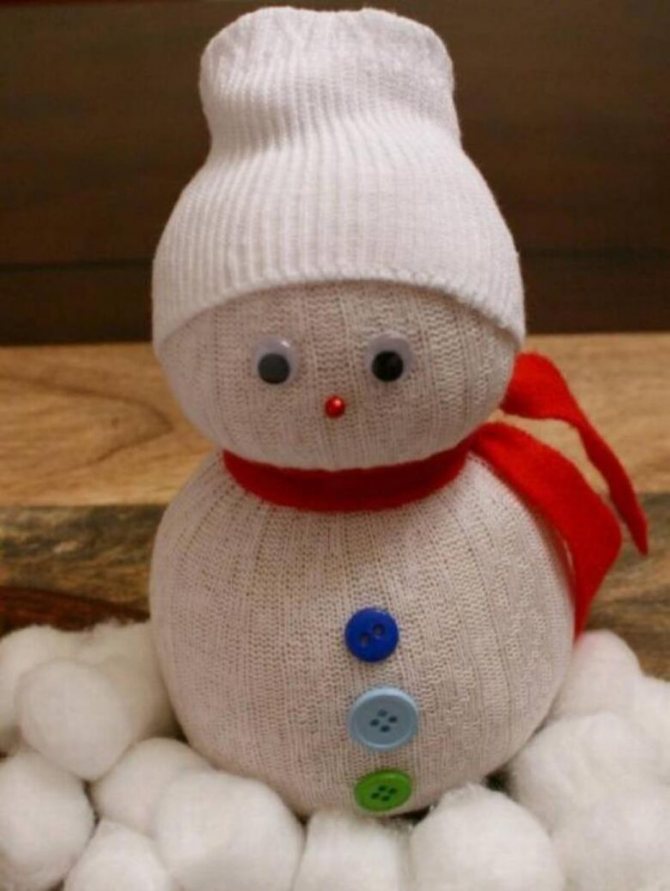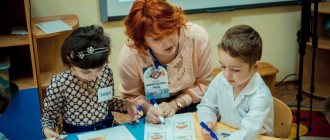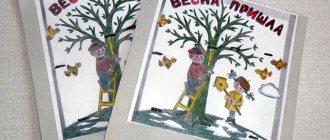MAGAZINE Preschooler.RF
The use of layouts in preschool educational institutions as an innovative technology for the cognitive development of preschool childrenAuthor: Pastukhova Lyudmila Ivanovna Educator, first qualification category MADOU “Kindergarten No. 48” Sverdlovsk region, Verkhnyaya Pyshma
According to the requirements of the Federal State Educational Standard, the subject-spatial environment must provide the opportunity for communication and joint activities of children and adults, and ensure the maximum realization of educational potential. Mandatory equipment includes materials that activate children’s cognitive activity.
Along with traditional methods, innovative pedagogical technologies are used for the intellectual development of preschool children. One of the promising technologies is prototyping.
Layout – a reduced model of an object (forest, mountains, field, lake, volcano, solar system, etc.).
The main characteristic of a model is that it reflects, contains the essential features of nature, and reproduces in a convenient form the most significant aspects and features of the modeled object.
I relied on the experience of Nadezhda Aleksandrovna Korotkova, who distinguishes the following types of layouts:
- floor, and then it has larger structural volumes
- desktop, then the size is limited by the size of the table or part of it
- podium (on special podium stands)
- wall in the form of three-dimensional subject paintings with a foreground subject plan and a background picture.
The use of game layouts in a subject-spatial environment meets the principle of integration of educational areas:
- Promote children's speech development. When working with the model, children describe, compare, talk about various phenomena and objects of nature, reason, thereby expanding their vocabulary.
- There is a close connection between the use of layouts and FEMP. In the process of work, children consolidate such mathematical concepts as space, quantity, size, etc.
- Layouts are of great importance in the development of children's play activities. The layout is considered by children as a play environment where various game plots can be developed, which contributes to the development of communicative initiative in children.
- The use of layouts plays a huge role in the cognitive development of children. The use of layouts on various topics increases the level of curiosity and cognitive interest.
- Layouts create favorable conditions for the sensory development of children: working with materials of different texture, quality, and shape promotes the development of external senses and activates fine motor skills of the hands.
- Layouts in artistic and aesthetic development help children highlight details, color, texture.
Any type of educational activity with children at all its stages requires competent organization and leadership from the teacher. Layout is no exception. The teacher highlights the main stages of work on creating and using a particular layout.
In the process of developing a game with layouts, the following tasks are solved:
- conditions are created to enrich children's ideas about the world around them.
- cognitive interest in living nature, emotional responsiveness and curiosity develops
- skills of correct behavior in nature are formed
- goodwill, responsiveness to the natural world, and careful attitude towards it are fostered.
The following forms of working with the layout are used:
- educational and research activities
- play activity
- productive activity
Methodological techniques for working with the layout:
- examination
- conversation
- reading fiction
- writing short stories
- didactic games.
In early preschool age, children are just beginning to form ideas about living nature. Simple layouts and models created by the hands of teachers form initial ideas about natural objects. But it is not the presence of the layout that shapes it, but the ability to communicate with it, the game. With younger preschoolers, work involves examining finished products and manipulating them. A conversation about nature or a natural object that the model depicts.
In the life of older preschoolers, director's play with small toys occupies a large place, when the child creates an imaginary situation, invents an event with characters, identifying himself with them, performing one of several roles, and modeling real social relationships in a playful form.
A model is a type of children's activity that helps to consolidate ideas about the natural world, allows one to transform acquired knowledge into play, saturating children's lives with new impressions and stimulating children's creativity. The layout is the result of constructive and creative activity and a very attractive playing space. Kids love playing with these layouts! The work of making models is labor-intensive, but very interesting!
I present some of the models that I made for my students. They are made of various materials. Layouts are multifunctional and their use in work is multifaceted, which makes it possible to solve many problems.
- Layout “On the roads and streets of the city” . The layout represents the roadway and parts of the street. Contains models of buildings and cars. It's two-sided. On the other side
"park" , "streets" .
- Layout "Waterfall"
- Africa layout
- Layout "Garden"
- Layout "Village Compound"
- Layout "World of Insects"
- Layout "Antarctica"
- Layout "Russian hut"
- Model “Water cycle in nature”
- Layout "In the world of dinosaurs"
- Layout "Forest floors"
- Layout "Fairy Tale on the Carpet"
Thus, the use of models in working with children is one of the innovative technologies that contribute to the formation of gaming skills, search activity and cognitive activity of each child. I am convinced that the use of layouts in preschool educational institutions will take its rightful place in the process of cognitive activity of preschool children.
Used Books:
- Nishcheva N.V. Subject-spatial developmental environment in kindergarten. Principles of construction, advice, recommendations / Nishcheva // Childhood - Press. – 2010.
- Korotkova N. A. Educational process in groups of children of senior preschool age. – M.: LINKA – PRESS, – 2007.
- Mikhailenko N. Ya., Korotkova N. A. Organization of story-based games in kindergarten. M.: "Gnome and D" , - 1997.
- Mikhailenko N. Ya., Korotkova N. A. How to play with a child. M.: Academic project, - 2001.
| Next > |
Snowman made from a sock
A great option for overly busy parents. By spending just a little time, you and your child can make a beautiful winter craft from scrap materials.
To do this you need:
- cut off the top of the sock to the heel (preferably white) and make a bag, gathering it into a bun and tying it tightly on one side;
- fill the bag with soft material, for example, padding polyester, and separate the body from the head, tying the snowman in the right place with thread. You can make a snowman more stable if you use any small grain as a filler;
- The snowman's hat and scarf can be made from paper or colored fabric, and the nose, eyes and mouth can be made from multi-colored beads.

The cheerful snowman for kindergarten is ready. To complete the look, you can sew colored buttons to the body.
Making a layout for a house model with your own hands
The process of making reamers yourself is no less exciting than working with ready-made samples. To do this, you will need almost any program for working with graphic images installed on your computer. CorelDraw or something similar that processes vector images is best. In it, with an increase or decrease in the image size, both the thickness of the lines and the loaded textures change in the same ratio. This allows you to obtain more realistic images. And the library of textures built into its shell is impressive. At the same time, by filling the sweep element with texture, you can get the finished appearance of the main layout elements.
The entire process, including filling parts of the scan with the selected texture, applying visual effects and architectural elements, and inserting images from the symbol library, takes from 10 minutes to half an hour if the house is not very complex. Print the scan on a color printer and start prototyping.
For testing, you can also use this one we made by copying the image to your computer and enlarging it to the required size.
Simple house layouts without development
These are, first of all, houses assembled with your own hands from paper cylinders. The same layouts are great for various small architectural forms on prefabricated layouts with landscapes.
But also, using a similar technique, you can create a realistic model that imitates a log house so dear to the heart of any Russian.
To do this, you need to take longer pieces of paper to make the tubes, so that after folding, its turns resemble the annual rings of a tree cut.
And the junctions of the crowns can be modeled by pressing the ends of the tubes with a solid round object of suitable diameter.
It is easy to assemble a paper frame from such elements. And display the intermediate crowns along the facades, and for a sample you can take a photograph of any real log house.
It is better to make roof coverings for model houses separately, in the form of paper slate sheets, tile flakes or honeycombs of bitumen shingles.
Dear readers, if you have any questions, please ask them using the form below. We will be glad to communicate with you




